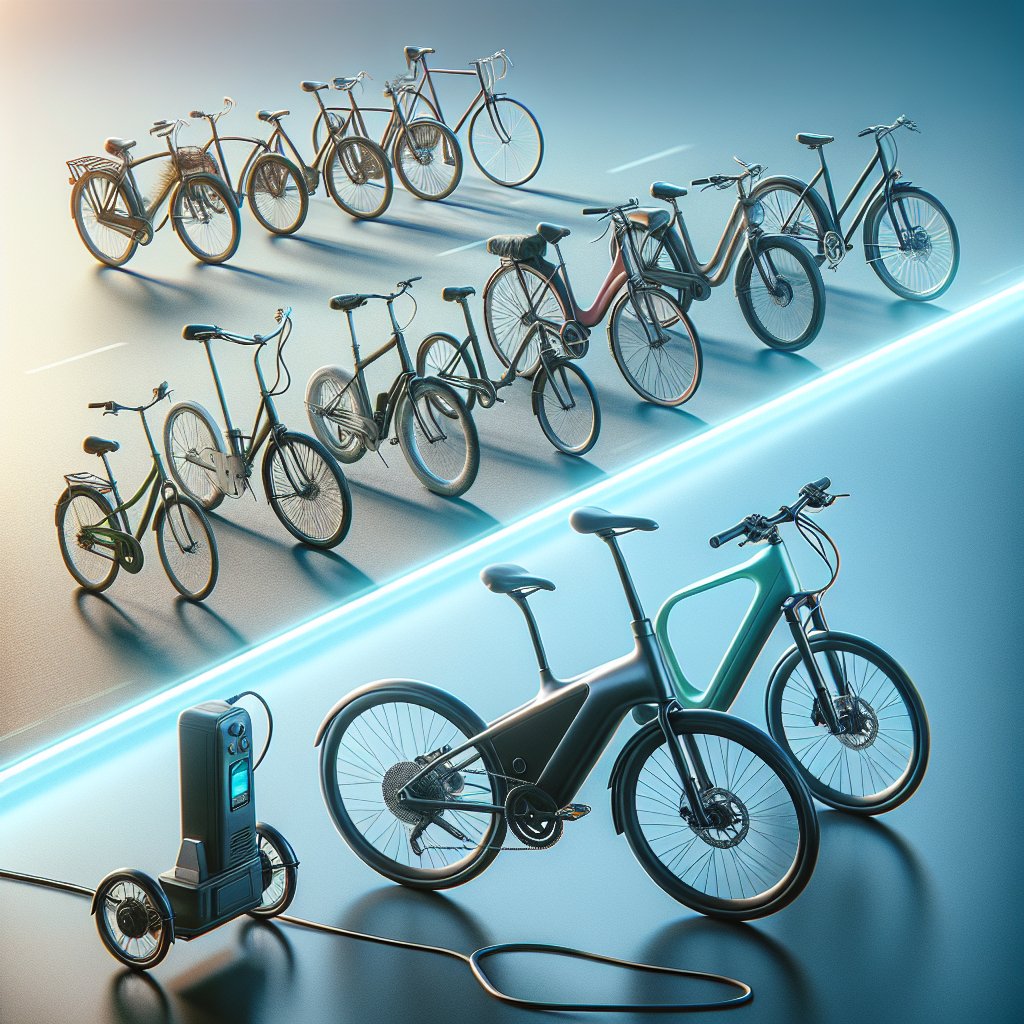The Evolution of Electric Bikes: From Niche to Mainstream
Electric bikes, commonly known as e-bikes, have undergone a remarkable transformation over the past few decades. Once considered a niche product for tech enthusiasts and early adopters, e-bikes have now entered the mainstream, becoming a popular mode of transportation for people of all ages and backgrounds. This article explores the evolution of electric bikes, examining their technological advancements, market growth, and the factors contributing to their widespread acceptance.
The Early Days of Electric Bikes
The concept of electric bikes dates back to the late 19th century, with the first patents for electric bicycles appearing in the 1890s. However, these early designs were rudimentary and lacked the efficiency and practicality needed for widespread use. It wasn’t until the late 20th century that significant advancements in battery technology and electric motors began to pave the way for modern e-bikes.
Initial Innovations
In the 1990s, the first commercially viable e-bikes started to emerge. These early models were often bulky and heavy, with limited battery life and range. Despite these limitations, they garnered interest from a small but dedicated group of enthusiasts who saw the potential for electric bikes to revolutionize personal transportation.
One of the key innovations during this period was the development of more efficient and lightweight batteries. Nickel-cadmium (NiCd) and later nickel-metal hydride (NiMH) batteries provided a significant improvement over earlier lead-acid batteries, offering longer range and better performance. Additionally, advancements in electric motor technology, particularly the introduction of brushless motors, contributed to the improved efficiency and reliability of e-bikes.
Challenges and Early Adoption
Despite these technological advancements, early e-bikes faced several challenges that hindered their widespread adoption. High costs, limited range, and the perception of e-bikes as a novelty rather than a practical mode of transportation were significant barriers. Moreover, the lack of infrastructure, such as charging stations and dedicated bike lanes, further limited their appeal.
However, early adopters, including commuters looking for an alternative to cars and public transportation, began to recognize the benefits of e-bikes. They appreciated the ability to travel longer distances with less effort, making e-bikes an attractive option for urban commuting and recreational riding.
The Rise of Modern E-Bikes
The 21st century has seen a dramatic shift in the e-bike landscape, driven by continued technological advancements, changing consumer preferences, and growing environmental awareness. Modern e-bikes are more efficient, affordable, and versatile than ever before, leading to their widespread acceptance and popularity.
Technological Advancements
One of the most significant factors contributing to the rise of modern e-bikes is the development of lithium-ion (Li-ion) batteries. These batteries offer a higher energy density, longer lifespan, and faster charging times compared to their predecessors. As a result, modern e-bikes can achieve greater ranges and better performance, making them a viable option for a wide range of users.
In addition to battery technology, advancements in electric motor design have played a crucial role in the evolution of e-bikes. Modern e-bikes often feature mid-drive motors, which provide better weight distribution and improved handling compared to hub motors. Furthermore, the integration of sophisticated control systems and sensors has enhanced the overall riding experience, offering smoother and more responsive power delivery.
Market Growth and Consumer Acceptance
The e-bike market has experienced exponential growth in recent years, driven by increasing consumer demand and a growing awareness of the benefits of electric bikes. According to market research, the global e-bike market is expected to continue its rapid expansion, with sales projected to reach millions of units annually.
Several factors have contributed to this surge in popularity. Firstly, the rising cost of fuel and the increasing congestion in urban areas have led many people to seek alternative modes of transportation. E-bikes offer a cost-effective and efficient solution, allowing riders to navigate traffic and reach their destinations more quickly.
Secondly, the growing emphasis on sustainability and environmental consciousness has made e-bikes an attractive option for eco-conscious consumers. E-bikes produce zero emissions and have a significantly lower carbon footprint compared to cars, making them a greener choice for personal transportation.
Lastly, the development of e-bike sharing programs and the expansion of cycling infrastructure in many cities have made e-bikes more accessible to a broader audience. These initiatives have helped to normalize e-bikes as a practical and convenient mode of transportation, further driving their adoption.
The Future of Electric Bikes
As e-bikes continue to gain popularity, the future looks promising for this innovative mode of transportation. Several trends and developments are expected to shape the future of e-bikes, further enhancing their appeal and functionality.
Integration with Smart Technology
The integration of smart technology is set to revolutionize the e-bike industry. Features such as GPS navigation, smartphone connectivity, and advanced rider assistance systems are becoming increasingly common in modern e-bikes. These technologies not only enhance the riding experience but also improve safety and convenience for users.
For example, some e-bikes now come equipped with anti-theft systems that can track the bike’s location in real-time, providing peace of mind for owners. Additionally, smart e-bikes can offer personalized riding modes and performance metrics, allowing riders to optimize their journeys and track their progress.
Continued Advancements in Battery Technology
Battery technology is expected to continue evolving, with researchers exploring new materials and designs to improve energy density, charging times, and overall performance. Solid-state batteries, for instance, hold the potential to offer even greater energy storage and safety compared to current Li-ion batteries.
These advancements will likely result in e-bikes with longer ranges and shorter charging times, making them even more practical for daily use. Furthermore, the development of wireless charging technology could eliminate the need for physical charging ports, further enhancing the convenience of e-bikes.
Expansion of E-Bike Applications
While e-bikes are already popular for commuting and recreational riding, their applications are expected to expand into new areas. For instance, e-cargo bikes are gaining traction as a sustainable solution for urban deliveries and logistics. These bikes can carry heavy loads and navigate congested city streets more efficiently than traditional delivery vehicles.
Additionally, e-bikes are being increasingly used in the tourism industry, offering guided tours and rental services for tourists. This trend is particularly evident in scenic and hilly regions, where e-bikes provide an accessible and enjoyable way to explore the landscape.
Conclusion
The evolution of electric bikes from a niche product to a mainstream mode of transportation is a testament to the power of innovation and changing consumer preferences. With continued advancements in technology, growing environmental awareness, and expanding applications, e-bikes are poised to play a significant role in the future of personal transportation. As more people recognize the benefits of e-bikes, their popularity is likely to continue rising, contributing to a more sustainable and efficient transportation ecosystem.



